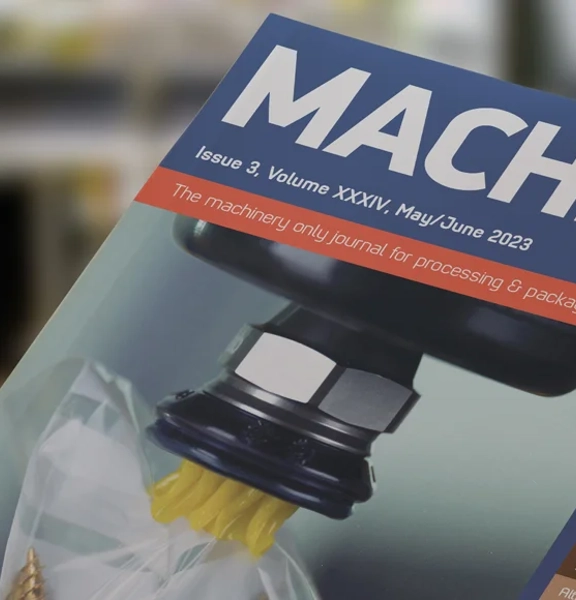Become a member
Take advantage of exclusive member benefits, world class events, networking and specialist support








 Become a member
Become a member 

10 November 2023
A specialist manufacturer of palletisers is using Omron’s new TM20 cobot thanks to its smaller footprint and its beneficial reach of 1.3 metres.
Omron recently launched its new TM20 collaborative (cobot) robot with a payload of 20 kg, while keeping its small footprint and providing a reach of 1.3 metres to make this new cobot ideal for tasks such as palletising.
Recognising the potential of the TM20 and the new opportunities it could bring, Reeco Automation, a specialist in the manufacture and delivery of a wide range of palletising solutions and an official UK solutions partner of Omron, was quick to adopt the TM20 to expand its palletising offer. The new RB2000 palletiser is a 20 kg payload, and billed as a cost effective, market ready solution which makes end-of-line robotic automation attractive to producers of all sizes.
With the introduction of the RB2000, Reeco believes that it has now levelled the playing field between traditional industrial robot palletising and cobot palletising. Manufacturers of all sizes now have an opportunity to palletise heavier products but maintain the smaller footprint offered by the Reeco RB range thus not using anymore factory space but still creating an automation process to help their existing lines.
Reeco’s managing director Lel Rees reckons robot palletising has been a crucial part of the manufacturing industry for decades. These industrial robots are designed to perform repetitive tasks with precision and speed, making them ideal for palletising. However, with the advent of collaborative robots or cobots, the palletising industry has undergone a significant transformation.
Traditional industrial robot palletising involves the use of large and heavy robots that are programmed to perform specific tasks. These robots are designed to handle heavy loads and operate at high speeds, making them ideal for palletising large volumes of products. Traditional industrial robot palletising is ideal for applications where speed and precision are critical.
One of the primary advantages of traditional industrial robot palletising is that it is highly reliable. These robots are designed to operate 24/7 without fail, making them ideal for high-volume manufacturing environments. Additionally, traditional industrial robot palletising is highly customisable, allowing manufacturers to program the robots to perform specific tasks.
However, traditional industrial robot palletising also has some significant drawbacks. Firstly, these robots are expensive to purchase and maintain. Additionally, traditional industrial robot palletising requires a dedicated space to operate, which can be challenging for smaller manufacturers with limited space.
Collaborative robots on the other hand are designed to work alongside human operators, performing repetitive tasks that are either dangerous or tedious. Cobots are smaller and lighter than traditional industrial robots, making them more flexible and easier to deploy.
Cobots are also designed to be easy to program, enabling operators to quickly reprogram the robot to perform a new task.
Cobot palletising is ideal for manufacturers with limited space. Cobots are designed to be flexible, allowing them to work in tight spaces and perform a wide range of tasks. Additionally, cobots are designed to be safe to work alongside human operators, reducing the risk of accidents and injuries.
Cobots are significantly less expensive than traditional industrial robots, making them accessible to manufacturers that would not be able to justify traditional robots. Additionally, cobots are easy to program, reducing the need for specialised programming skills.
Meanwhile, Omron has launched a new palletising solution for collaborative robots, responding to the need for more flexible production processes while reducing programming time. The PLC-based cobot palletising solution is created on Omron’s NX1 series modular machine controller that is equipped with a specialised Palletising Function Block.
To simplify and to speed up the programming of palletising applications, Omron has launched a new cobot palletising solution.
The key functionalities of the solution, built on Omron’s NX machine controller with a special function block, include quick pallet pattern definition, easy step-by-step setup and calibration by teaching as well as a comprehensive production dashboard. The flexibility of the solution enables easy expansion and integration of additional functionality.
This NX machine controller communicates directly with the cobot controller, and seamlessly handles the various input and output devices and tools needed for a palletising solution, such as a gripper, pillar, conveyor belt, safety components, sensors, and servo motors. This enables the complete sequencing to be performed from the PLC. The solution can be connected to a human machine interface for operation.
Tel: 01908 258258
Website: www.industrial.omron.co.uk